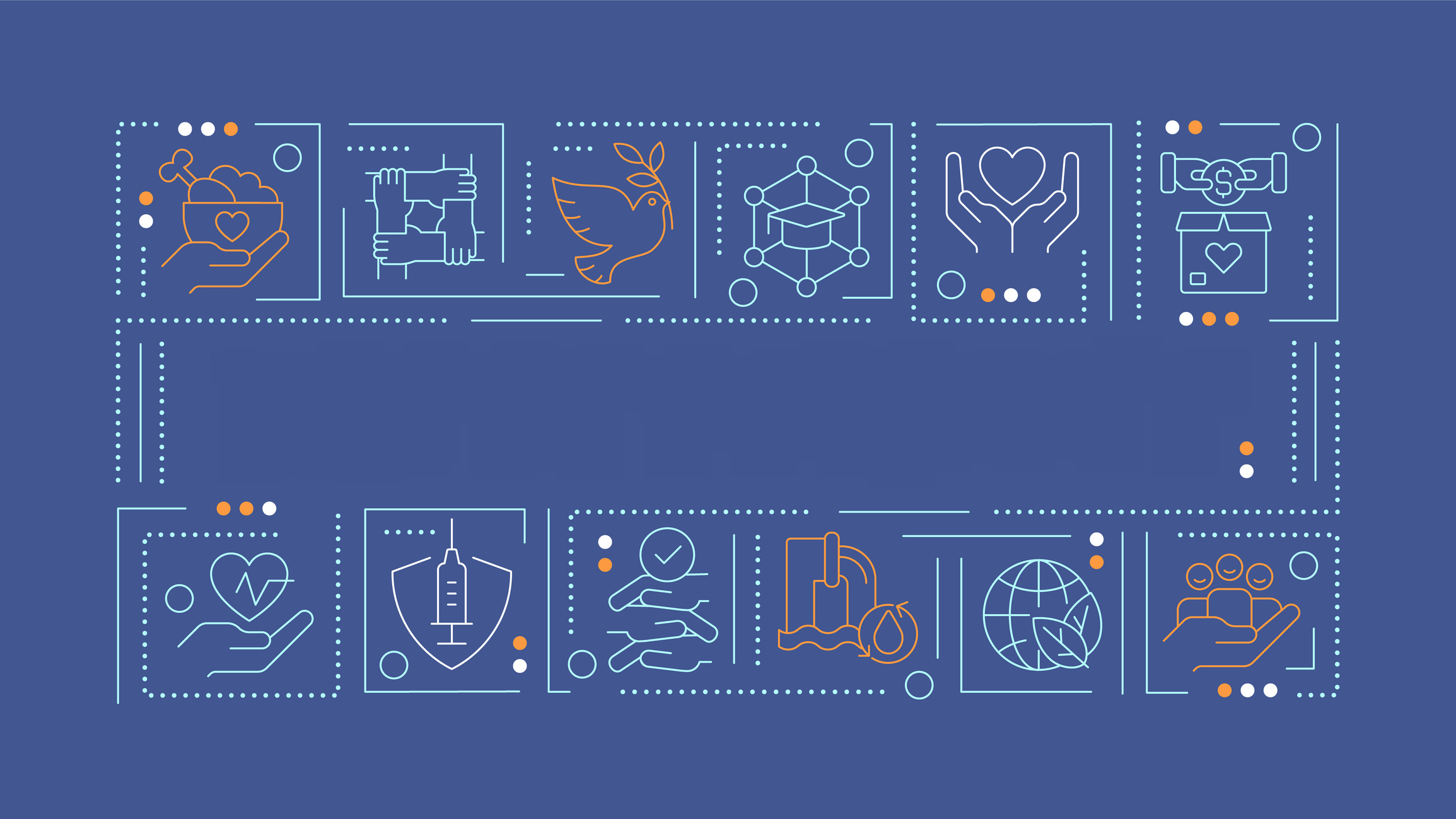To effectively communicate with developers, it's essential to understand the web development process, define clear objectives and requirements, use visual aids, and set realistic expectations. Poor communication and constant changes in the development scope can lead to delays and misunderstandings, which can result in costly mistakes.
The Web Development Process
Web development projects can be complex and involve multiple stages, each with its own set of tasks and responsibilities. Understanding the typical web development process can help you communicate more effectively with your developers and ensure a successful outcome.
The stages of web development typically include planning, design, development, testing, and launch.
In the planning stage, the client and developer work together to define the project's goals, scope, timeline, and budget. This stage is critical to ensure that both parties are aligned on expectations and to establish a clear roadmap for the project.
In the design stage, the developer will create wireframes and mockups to visually represent the website's layout, design, and functionality. This stage is crucial for ensuring that the client's vision is being accurately translated into a tangible design concept.
During the development stage, the developer will build the website's functionality, integrating design elements and content into a cohesive whole. This stage may involve coding, database creation, and other technical tasks.
Once the development stage is complete, the website will be tested to ensure that it is functioning correctly and meets the client's requirements. This may involve user testing, bug fixes, and other quality assurance measures.
Finally, the website is launched and made available to the public. Ongoing maintenance and updates may be required to keep the website running smoothly and up-to-date.
- Planning Stage:
Define project goals, scope, timeline, and budget.
Ensure alignment of expectations and establish a clear roadmap. - Design Stage:
Create wireframes and mockups to visually represent website layout, design, and functionality.
Ensure accurate translation of client's vision into a tangible design concept. - Development Stage:
Build website functionality, integrating design elements and content into a cohesive whole.
May involve coding, database creation, and other technical tasks. - Testing Stage:
Test website to ensure it is functioning correctly and meets client's requirements.
May involve user testing, bug fixes, and other quality assurance measures. - Launch Stage:
Make website available to the public.
Ongoing maintenance and updates may be required to keep website running smoothly and up-to-date.
Throughout each stage of the web development process, effective communication between the client and developer is critical. The client should provide clear and detailed requirements, feedback, and approvals at each stage, while the developer should provide regular updates and seek clarification when needed.
Tips for Communicating Your Vision to Developers
When it comes to communicating your vision to developers, it's important to be clear and concise:
- Clearly define your goals and objectives for the website:
Before you start the development process, it's important to have a clear understanding of what you want to achieve with your website. Define your goals and objectives, and make sure they align with your overall business strategy. - Provide detailed requirements and specifications:
Developers need to know exactly what you want them to build. Be as specific as possible when outlining your requirements and specifications. This includes details about functionality, design, and user experience. - Use visual aids to convey your ideas:
Visual aids, such as sketches, wireframes, and mockups, can be extremely helpful in conveying your ideas to developers. They can help you communicate your vision more clearly and ensure that everyone is on the same page. - Set realistic expectations and timelines:
It's important to set realistic expectations and timelines for the development process. Don't expect everything to be done overnight, and be prepared to make adjustments along the way. Make sure you have a clear understanding of the timeline for each stage of the development process. - Encourage open communication and regular check-ins:
Effective communication is key to a successful web development project.
Encourage open communication between you and your developers, and schedule regular check-ins to ensure that everything is on track. This will help you catch any issues early on and avoid delays or miscommunication.
Overcoming Communication Challenges
Effective communication during web development projects can sometimes face challenges. Misunderstandings and technical jargon can cause problems and affect project progress. It's important to identify these challenges and find ways to overcome them.
One common challenge is technical jargon. Developers may use technical terms that clients are not familiar with, making it difficult for them to understand what is happening in the project. To overcome this challenge, clients should ask questions and seek clarification whenever they don't understand something. And, developers should try to explain technical terms in simple language that clients can understand.
Another challenge is misunderstandings. This can happen when clients and developers have different ideas about the project, or when there is a lack of clear communication. To overcome this challenge, it's important to have open communication and regular check-ins. Clients should provide feedback and ask for updates to make sure everyone is on the same page. Developers should make sure they understand the client's requirements and goals and clarify any misunderstandings.
In addition, language and cultural differences can also lead to communication challenges. If the client and developer come from different backgrounds, there may be differences in communication styles or understanding of certain concepts. To overcome this challenge, it's important to establish clear communication from the beginning and find common ground. Using visual aids, such as sketches or wireframes, can help to bridge the gap between different languages or cultures.
Download Software Design Document Template
Tools and Resources for Effective Communication
Effective communication is key to the success of any web development project, and luckily, there are many tools and resources available to facilitate this communication. Here are a few options to consider:
- Project management software: Tools like Trello, Asana, or Jira can help you keep track of project milestones, deadlines, and task assignments. These tools also allow for easy communication between team members, as everyone can see what tasks need to be completed and when.
- Collaboration tools: Platforms like Slack or Microsoft Teams allow for real-time messaging and file-sharing between team members. This can be especially helpful for quick questions or updates that don't necessarily require a full email or phone call.
- Virtual Meetings and Screensharing: Face-to-face communication can be invaluable in building strong working relationships and ensuring that everyone is on the same page. Tools like Zoom, Skype, or Google Meet can be used for virtual meetings or screen-sharing sessions.
- Design tools: If you're struggling to articulate your vision for the website, design tools like Figma, Sketch, or Adobe XD can be helpful in creating visual representations of your ideas. This can be especially useful for complex layouts or interactions.
- Document sharing and version control tools: Tools like Google Drive or Dropbox can be used to share documents, presentations, or other files with team members. Make sure to use version control features to avoid confusion over which version of a document is the most current.
Feature Creeping: How to Avoid It in Web Development Projects
One common challenge that can arise during web development projects is feature creeping. This occurs when new features or functionality are added to the project scope beyond the original requirements, leading to delays, cost overruns, and other issues. Below are some tips for avoiding feature creeping in your web development projects.
Clearly define project scope and requirements
At the outset of the project, define the project scope and requirements in detail. Work with your development team to create a project plan that outlines the scope, budget, timeline, and deliverables. Be clear about what features are included in the project and what is not. This will help ensure that everyone is on the same page and can avoid adding unnecessary features later.
Prioritize features
During the planning stage, work with your development team to prioritize the features based on their importance and value to the project. This can help prevent the addition of low-priority features that can lead to scope creep. Prioritizing features also helps the team stay focused on the most important aspects of the project and avoid distractions.
Set realistic timelines and budget
Setting realistic timelines and budget can help prevent feature creeping. Be sure to work with your development team to create a realistic project plan that takes into account potential roadblocks, delays, and contingencies. This will help prevent the addition of features that were not included in the original scope due to unrealistic timelines or budget constraints.
Use change control procedures
Implement change control procedures to manage any changes to the project scope or requirements. This can include a formal process for submitting and approving change requests. This helps ensure that any new features or functionality are carefully considered and do not impact the project scope, timeline, or budget.
Effective communication between clients and developers is essential for the success of web development projects. By using the tips and tools provided, clients can ensure that their vision is accurately communicated and brought to life by their development team.




